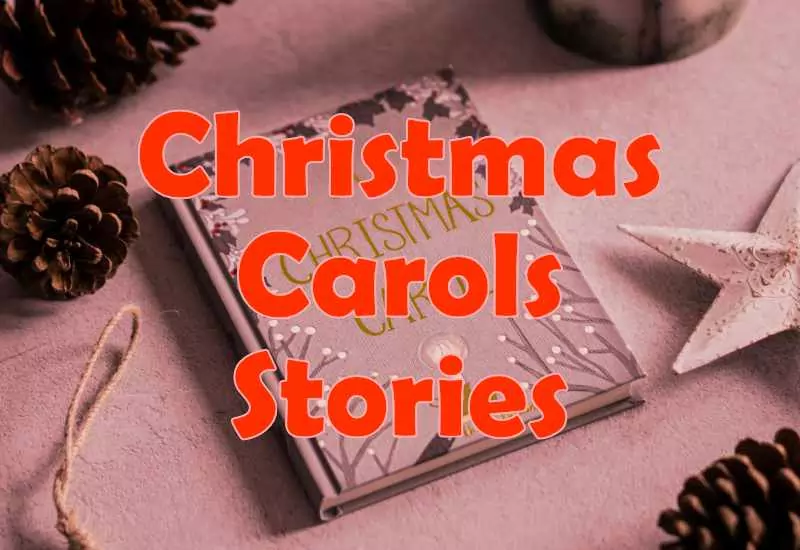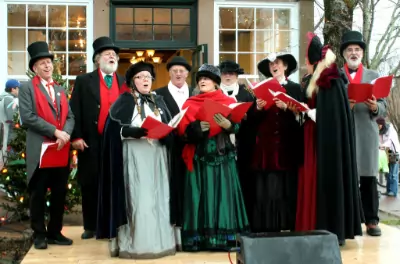Christmas Sheet Music For Beginners

Contents
The Fascinating Stories Behind Your Favorite Christmas Carols
Now that the holidays are approaching, more people are looking online for Christmas sheet music for beginners to prepare for their Xmas parties or family reunions. But have you ever been curious about the history behind the Christmas carols that we sing every year? In this article we will discuss some of the interesting stories behind the songs that we perform and hear every holiday season.
The Origin of the Christmas Carol

Courtesy by Flickr
Christmas carols are secular or religious songs sung during the Christmas season to celebrate the birth of Christ. But carols actually started as a pagan tradition, which was co-opted by the early Christian church. In fact, Christmas itself actually began as a pagan holiday, the winter solstice, which was the shortest day of the year. It was celebrated by dancing and drinking, as well as by singing joyful songs.
Christians also transformed the pagan practice of performing carols during the season, changing them instead to religious songs in Latin that were performed by the clergy. The earliest record of this practice dates back to 129 AD, when a bishop of Rome performed a song called “Angel’s Hymn”, specifically for the Christmas holiday.
The tradition of caroling, or going house to house performing Christmas songs, may date back to as early as the 13th century, when the practice was known as ‘wassailing’. However, this early practice did not people performing carols, but merely wishing good fortune to their neighbors.
But the practice changed when Saint Francis of Assisi started including songs as part of his Christmas services. But instead of being performed in the traditional Latin, he encouraged people to perform songs in their own languages. Because of this change, carols became popular and the practice of caroling quickly spread across Europe.
The Twelve Days of Christmas
In Christian theology, the twelve days of Christmas is the period between Christ’s birth and the arrival of the Magi. It starts on December 25 and runs up to January 6, which is the Epiphany. Although the exact origin of this carol is unclear, the earliest known version appeared in a children’s book called Mirth With-Out Mischief, published in 1780.
Most historians believe that the song originally evolved as a memory game for the holidays, with the list of items the player is required to remember increasing with every verse. One popular interpretation of the song is that it is a secret code for persecuted Catholics so they could pass on their tenets without being detected by authorities.
Silent Night
The lyrics for Silent Night were written by a young Austrian priest, Joseph Mohr, in 1816. His friend Franz Xavier Gruber, the parish choirmaster, provided the melody for the song. Mohr intended its six verses to express hope to his parishioners who were reeling after twelve years of the Napoleonic War as well as the severe changes in climate brought about by the 1815 explosion of Mt. Tambora in Indonesia.
The song is most notable, however, for its role in bringing about the “Christmas truce” of 1914, which took place in the front lines of WWI in Flanders. During a pause in the fighting, a German officer named Walter Kirchhoff started performing the song, first in German, then in English. This caused German and British soldiers to briefly lay down their arms and sing “Silent Night” together.
White Christmas
This holiday perennial was written by Irving Berlin, who, ironically enough, was Jewish and thus, did not celebrate Christmas. Berlin wrote the song for a musical that eventually became the 1942 movie Holiday Inn, and would win him an Oscar for Best Song. The melancholy of the song was believed to be due to Berlin’s sadness over the death of his infant son, who died on Christmas day in 1928.
Bing Crosby first performed “White Christmas” on his CBS radio show, which aired on December 25, 1941. By then, America was at war since the Japanese had attacked Pearl Harbor on December 7. The song would go on to become the best-selling record ever, according to the Guinness Book of World Records, selling fifty million copies.
O Little Town of Bethlehem
Phillips Brooks, who was the minister of the Philadelphia Holy Trinity Church, wrote this popular carol, inspired by a trip he took to the Holy Land in December 1865. The trip included a horseback ride on Christmas Eve from Jerusalem to Bethlehem, after which Brooks attended services at the Church of the Nativity.
Brooks wrote O Little Town of Bethlehem several years later, because he wanted a new song for his parish’s children to sing for Christmas services. Lewis Redner, the church organist, provided the melody, which he said came to him in a dream the night before the Christmas Eve service. The song was first performed in public in 1868 and has since become a Christmas classic.
Have Yourself a Merry Little Christmas
This Christmas classic was written by Hugh Martin and Ralph Blaine for the 1943 movie musical “Meet Me in St. Louis”. The original lyrics were depressing to an almost comic degree, to fit the mood of the scene in which Judy Garland and her sister Margaret O’Brien face the prospect of moving away from their beloved home.
This led to Garland asking Martin to change the lyrics to make it less downbeat. Although he originally resisted, he eventually gave in, turning it into more of a buck-up song, although he kept the line “until then, we’ll have to muddle through somehow”.
Despite the change, the song failed to become a breakthrough Christmas perennial. But in 1957, Frank Sinatra asked Martin for a happier version yet again, changing the “muddle through” lyric to “hang a shining star upon the highest bough”. These changes caused the song’s popularity to skyrocket, and it has been recorded thousands of times since.
The Christmas Song
Also known as Chestnuts Roasting on an Open Fire, the song was ironically written by Mel Torme on a hot summer day in 1945. He saw a portion of the lyrics on his partner Bob Wells’ piano, and he completed the song. Wells later said that he wrote the lines as a way to cool himself off.
The song would go on to make history as the first Christmas classic to be recorded by a black American, Nat King Cole. The recording became an immediate hit and helped dispel the notion that Americans would not want to buy a Christmas record from a black artist.
Deck the Halls
This is another Christmas carol that was not initially about Christmas. The melody came from a traditional Welsh folk song called “Nos Galan” which was about the New Year’s. When Thomas Oliphant provided the English lyrics for the song, he changed it to be about the start of the Christmas holidays, calling for the merriment and decorations that typically accompany the season.
The part of the original song that was retained was the “fa la la” lyric, which has become what most people remember. There was also a reference to drinking which was removed and this is the version that is most popular today.
O Holy Night
It is ironic that one of the most popular Christmas carols commemorating the birth of Christ would have its original lyrics written by an atheist. Placide Cappeau, a wine merchant who was known to not be particularly religious, was asked by the parish priest of his local church to write a Christmas poem to mark the renovation of the church organ.
Cappeau wrote the poem Minuit, chretiens (Midnight, Christians), which was set to music by composer Adolphe Adam. The resulting song was named Cantique de Noel, or Christmas Carol, and it was immediately popular among churchgoers when local opera singer Emily Laurey first performed it in 1947.
However, church leadership tried to have the song banned when they learned about Cappeau’s views on religion. Despite the attempted ban, the French faithful continued to perform the song, albeit outside the church, ensuring its survival.
The song eventually became to the attention of American Unitarian Minister John Sullivan Dwight. He translated the song to English and the result was “O, Holy Night”. This version eventually overshadowed the original to become the most popular version of the song.
Where to Find Free Christmas Sheet Music For Beginners
Related: I wrote an article about free piano sheet music for beginners or free sheet music for kids, too.
With the Christmas holidays fast approaching, people are looking forward to hearing and singing their favorite carols. If you know how to play a musical instrument, your talents will be much in demand as everybody wants to have musical accompaniment for their carol singing. However, the question is: do you have sheet music for all the different Christmas carols that people want to sing?
Fortunately, it is very easy to find Christmas sheet music for beginners simply by doing a search on Google. There are many websites where you can download sheet music for free as a .pdf file, and you can even search for the song that you need to see if it is available. There are even sites that provide links to where you can find free Christmas piano sheet music for beginners printable versions.
Parents, Teachers & Sheet Music Seekers:
If I offered to provide you hundreds of legit sheet music PDFs for your kids:
- Brand-New & Exclusive Compositions
- Age & Level Appropriate
- With INSTANT Online Access
- Worry-FREE Licensing & Copyright
...would you take me up on that offer?
ABOUT
I started Music4Kids with a simple goal in mind: To provide valuable information to guiding parents who want to raise musically inclined kids.
Click to read on